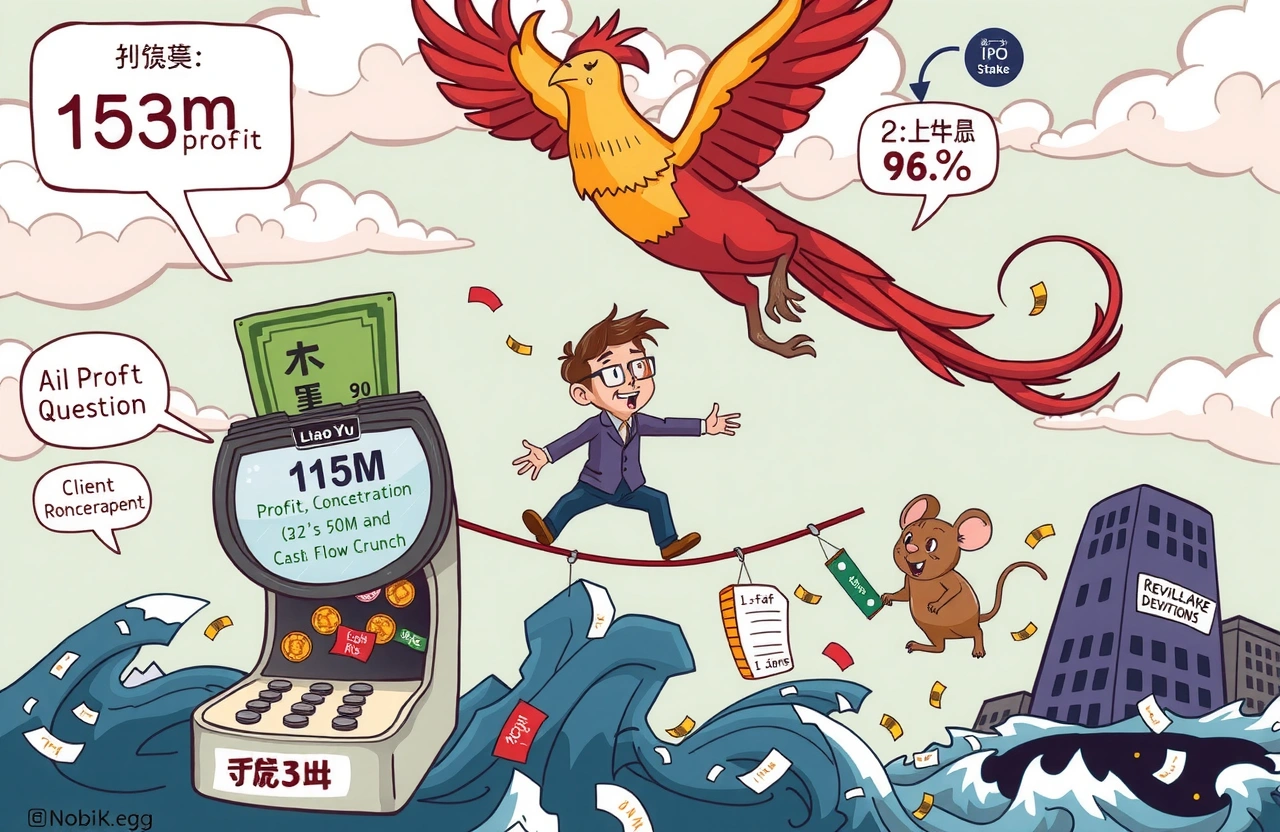The Profitability Paradox
Nobik Technology’s IPO documents present a financial riddle: How can an AI infrastructure firm report soaring profits while battling severe cash shortages? This Chengdu-based company, specializing in AI solutions for transportation, energy, and urban management, recorded 115 million yuan ($15.8M) net profit in 2024. Yet its operating cash flow bled nearly 100 million yuan ($13.7M) that same year. The IPO secrets lie in its client concentration, extended payment terms, and unconventional shareholder structure. Investors eyeing this Hong Kong listing must scrutinize why accounts receivable ballooned to 118% of annual revenue, exposing critical vulnerabilities beneath surface-level success. With prior IPO attempts abandoned and governance questions looming, this analysis uncovers the red flags hidden in plain sight.
Founder’s Journey and Unconventional Backing
Early Stagnation and Pivotal Connections
Founder Liao Yu (廖峪), a 43-year-old Sichuan University software engineering graduate, established Nobik in 2015 while employed at Chengdu Rayshine Technology. Initial inactivity lasted two years until 2017, when advisor Zheng Sanzhong (郑三忠) transformed its trajectory. Zheng introduced the first major investor, Zhang Xiaojun, who bought 12.5% equity for 2.375 million yuan. This pattern continued:
– Zheng secured investments from Li Peng (200,000 yuan for 1.7% stake) after Nobik launched its AI-transport division
– Zheng himself acquired 7.5% shares as an “independent third party” during employee incentive allocations
– Public records suggest Zheng previously served as independent director at rail supplier Xianghe Industrial, though Nobik’s filings reveal scant details about his background
Questionable Equity Incentives
In 2019, Nobik created two “incentive platforms” – Tieke Chuangzhi and Tieke Zhineng – ostensibly for employee rewards. However, disclosures show:
– 96.7% of platform shares went to external advisors Li Chenghui (李成辉), Li Qingfeng (李庆丰), and Liu Qingchang (刘庆昌)
– Only one Nobik employee held minor stakes across both entities
– These platforms control 14.24% of Nobik, with independent third parties dominating ownership
Such arrangements deviate from standard employee stock ownership plans, raising governance concerns ahead of the IPO.
Financial Contradictions Exposed
Superficial Strength Versus Cash Reality
Nobik’s income statements dazzle: Revenue grew from 253 million yuan ($34.7M) in 2022 to 403 million yuan ($55.3M) in 2024, with gross margins reaching 58.9%. Its AI-transport segment achieved staggering 92.5%毛利率 in 2023. Yet operational realities tell another story:
– Accounts receivable hit 475 million yuan ($65.2M) in 2024, exceeding annual revenue
– Payment collection periods stretched from 192 to 352 days over three years
– Trade receivables provision for losses surged to 65.2 million yuan ($8.9M)
These metrics reveal how delayed payments from public-sector clients cripple liquidity despite paper profits.
Profitability Drivers and Erosion Risks
Nobik’s high margins stem from capital-light hardware procurement in its AI-transport business. However, sustainability is questionable:
– AI-city governance revenue collapsed 83% YoY in 2024
– Segment毛利率 plummeted from 39.6% to 12.3% due to project volatility
– Net profit margins remain modest (24.3%-28.6%), indicating high operating costs
Dependence on few clients magnifies these risks – top five customers contributed 85.9% of 2023 revenue.
Client Concentration Dangers
The Perils of Overreliance
Public-Sector Payment DelaysNobik acknowledges systemic cash flow challenges in its prospectus: “We may extend trade receivables terms due to public sector clients’ prolonged internal payment approvals.” This creates a vicious cycle:
1. Revenue recognition upon project delivery
2. 6-12 month waits for payment
3. Borrowing to fund operations during gaps
4. Rising interest expenses compressing margins
With 66.6% of revenue tied to top clients in 2024, any contract loss could trigger solvency issues.
Governance Red Flags
Mysterious Shareholders and IPO Secrets
Beyond equity platforms, Nobik’s shareholder registry includes enigmatic figures:
– Fan Zhihe (范志和): Holds 0.4% stake despite minimal investment; chairman of Shanghai Serum Bio-technology, who faced 2023 corruption investigation
– Zheng Sanzhong (郑三忠): Retains 4.9% ownership despite ambiguous advisory role
– Multiple misspellings in filings (e.g., Li Qingfeng/Li Qing峰) suggest documentation flaws
These IPO secrets compound concerns about oversight at a firm seeking public funds.
Aborted Listings and Valuation Questions
Nobik previously pursued a Shanghai STAR Market IPO in 2023 before abruptly withdrawing. Current Hong Kong filing reveals:
– Post-money valuation: 2.13 billion yuan ($292M)
– Final pre-IPO share price: 62.5 yuan
– State-backed investors (Chengdu-Chongqing Fund, Chengdu Wufa) joined 2024 Series D
Yet negative cash flows and receivables risk suggest this valuation may not hold post-listing.
Survival Challenges Ahead
Cash Flow Time Bomb
Nobik’s operational model appears fundamentally flawed:
– Growth requires upfront project spending
– Delayed reimbursements create funding gaps
– Borrowing costs reached 8.7 million yuan ($1.2M) in 2024
Without shorter payment cycles or diversified funding, liquidity crises seem inevitable.
Strategic Vulnerabilities
Decoding Nobik’s ViabilityNobik exemplifies how impressive top-line metrics can mask existential threats. Its IPO secrets – questionable equity allocations, client dependencies, and cash flow mismanagement – reveal a company prioritizing growth over financial health. While AI infrastructure demand remains strong, investors should demand:
– Transparent receivables collection plans
– Client diversification strategies
– Governance reforms for incentive platforms
Scrutinize the final prospectus for concrete solutions, not just technological promises. Until Nobik proves it can convert profits into cash, this IPO remains a high-risk gamble. For ongoing analysis of Asian tech listings, subscribe to our IPO Watch newsletter.



